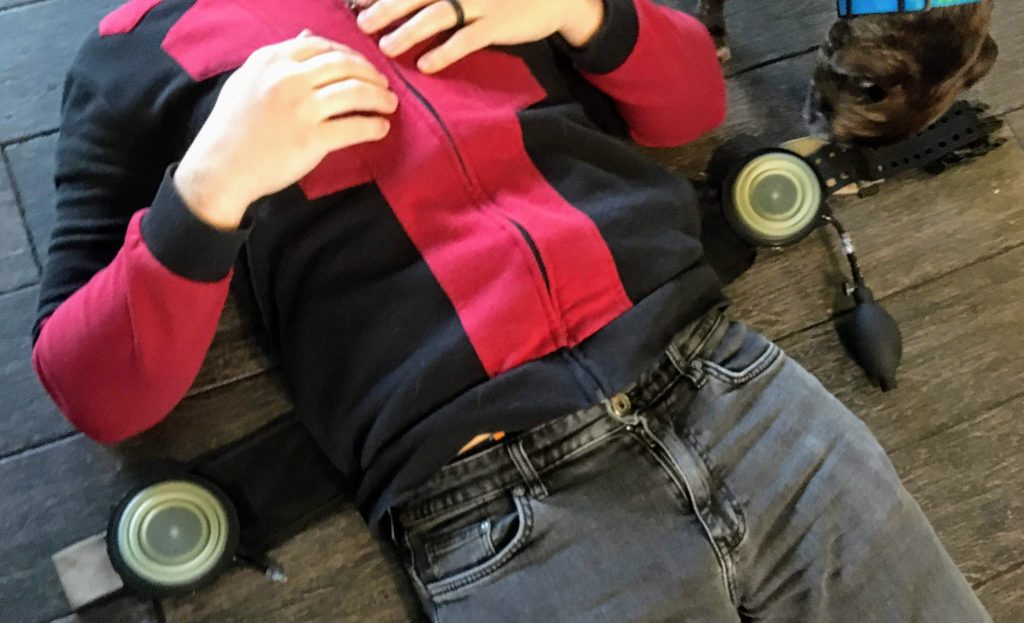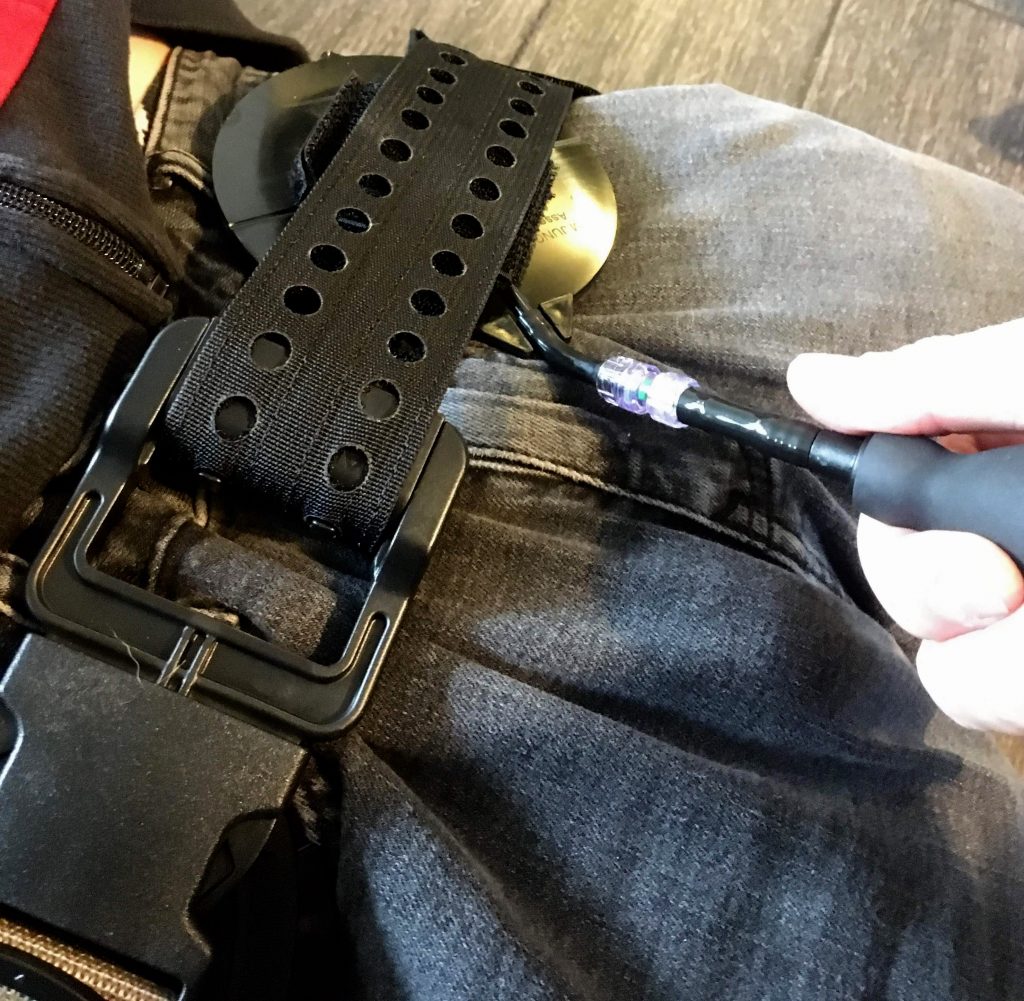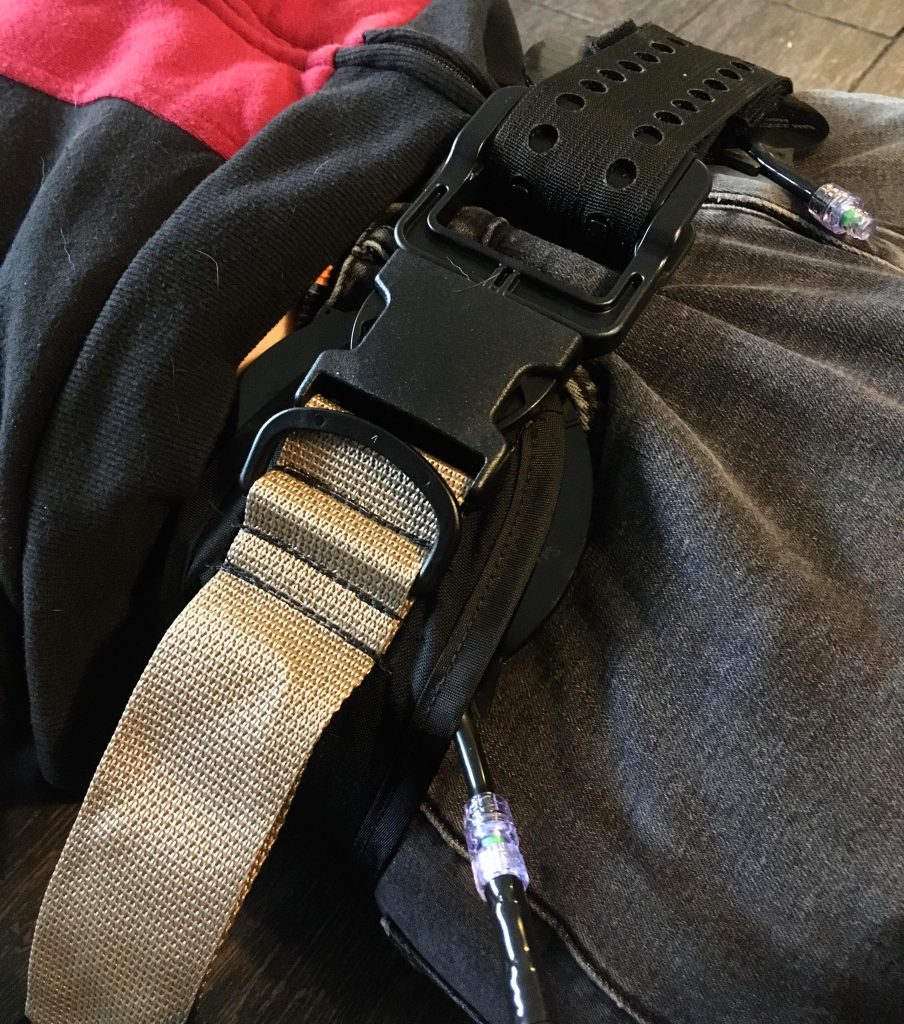
This bad boy is the SAM Junctional Tourniquet. Which you figured out from the title already, but whatever.
I was fortunate enough to get my hands on one and have a dummy friend handy who agreed to let me apply it, so here are my initial impressions.

First, as you can see here (also pictured, helpful puppy), you have to get the belt under your casualty first – the folks at SAM suggest a log roll to the side, which is really the only way I can see getting this on an unconscious casualty single-handedly. Of course if the casualty is conscious and cooperative you could have them help you, or if you have multiple providers you could consider lifting them up and sliding it under as options as well.
For reference, here’s SAM Medical’s somewhat-dry instructional video:

Once you get the belt in the correct spot (lower than my photo above, as you can see), you apply the belt much the same way as you would apply the SAM XT limb tourniquet I reviewed – both have the same “snapping” buckle feature.
Once you get it tightened down with the belt portion and secured with the Velcro (a possible source of failure, I’ll note: if/when Velcro is bloodied, it often does not adhere properly), you then move to inflating one or both of the pressure reservoirs, depending on where the injuries are.
These work just like a blood pressure cuff (sphygmomanometer for those of you who are fancy) does – same little wheel to deflate, same squeeze to build pressure. The only big difference you’ll note is the in-line luer lock connection – this is so you can use the same pump to inflate both pressure resevoirs.

Inflating 
Inflated, “bleeding stopped”
Once you get the bleeding stopped on the first injury side, you can then move to the other side – the luer lock connectors retain the air pressure when you disconnect them, so there’s no worry about losing your tamponade.

Unfortunately, the sample I got my hands on did not have the auxiliary strap that allows you to apply it to a wound on the axilla, but the concept is very similar, and you can see it in the video I linked above starting around 2:45.
Similar concerns apply here about Velcro and blood, but otherwise the concept is nearly identical.
Overall in my role pre-hospital, I don’t think there’s much point of having something like this – we see so little isolated traumatic junctional injury that having a purpose-built device that will likely just take up ambulance space isn’t really an effective use of time, money, or space. However, for military or tactical environments, especially with limited medical provider availability, I can definitely see the value, but I’ll stick to wound packing and pressure dressings for the time being.
Thanks for taking a look, I’ll touch base on at least one more SAM product soon!
-T